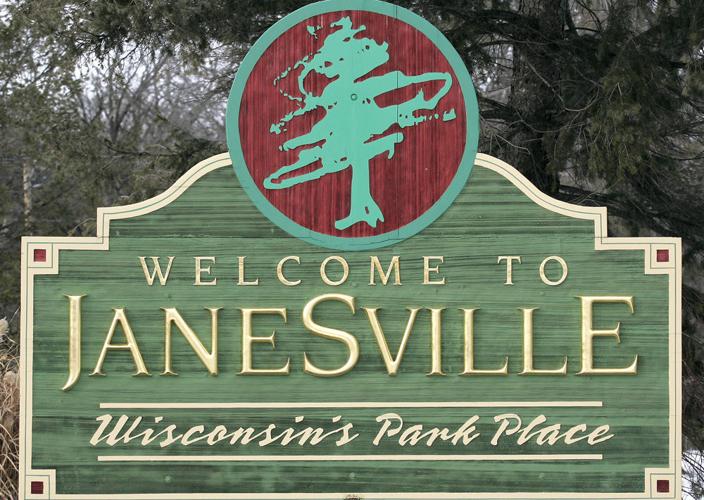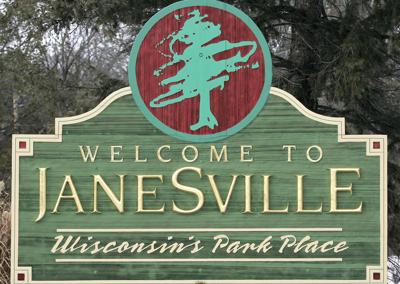JANESVILLE
The needle could soon start to move on a 92-unit answer to Janesville√ŘŤ÷ ”∆Ķ affordable housing crunch.
On Tuesday, Madison apartment developer Commonwealth Companies is hosting its first neighborhood meeting to lay out the latest details on River Flats, an affordable housing apartment complex it proposes to build north of Janesville police headquarters near downtown.
River Flats is one of three apartment developments being discussed or already underway. They come at a time when city housing and economic development officials are trying to respond to a housing crunch and shortage of available apartments.
Support local journalism
Help support reporting that brings important issues to light. By subscribing, you can help us continue to serve the area and keep local journalism thriving. Local news matters.
Subscribe today for as little as $9.95/month.
If River Flats moves forward as proposed, it would bring nearly 100 multi-bedroom apartment units downtown. It is one of three apartment developments that together could bring about 300 new units to Janesville by mid-2021, according to city estimates.
Another of the three developments, The Glade off Racine Street near Interstate 90/39, plans to bring 89 ‚Äúhigh-end,‚ÄĚ market-rate apartment units to market by early 2021 and another 171 units by 2024. Diamond Ridge, a development of mid-priced apartments off Kennedy Road, promises 115 units and is poised to break ground this month.
The three projects are slated to be subsidized either through state or local tax incentives. They vary in size and the real estate market segments they would serve.
Short of demand
River Flats would offer a blend of apartments to working people who on average would be required to earn less than 60 percent of the median salary for Rock County residents.
City Economic Development Director Gale Price said the prospect of 300 units in the next two years‚ÄĒand as many as 470 or more within the next five years‚ÄĒrepresents a balanced response to a rental housing market that some local analysts estimate is at least 500 units short of demand.
‚ÄúFive hundred units, that√ŘŤ÷ ”∆Ķ not some new number,‚ÄĚ Price said. ‚ÄúIt came from my mouth at a housing summit last year. That was from a number of factors, including talking to our local employers and getting a sense of how many new people are they bringing to town.‚ÄĚ
Despite a consistent uptick in job growth in Janesville over the past few years, Janesville has issued an average of only about 100 construction permits per year for housing starts‚ÄĒnew homes built primarily for owner occupancy. That√ŘŤ÷ ”∆Ķ compared to an average of about 230 housing starts a year before the Great Recession, Price said.
A statewide study by the Wisconsin Realtors Association released in September shows Janesville has the state√ŘŤ÷ ”∆Ķ fewest new housing units compared to demand for both owner-occupied and rental properties.
Meanwhile, a handful of apartment complexes have been renovated in the last few years. Some served to increase rents and in some cases have shifted apartment units from a rent-capped designation to market-rate.
Market-rate rents in Janesville can range from $700 to $1,500 a month, local rental market analysts said. That comes as local home prices have climbed steadily and relatively few apartment units have been added anywhere in Rock County.
Price said there should be a broad focus on apartment projects that serve multiple market segments‚ÄĒfrom high-end down to ‚Äúaffordable‚ÄĚ rents‚ÄĒbut he said the city is paying special attention to generating new, affordable housing, predominantly rental housing that√ŘŤ÷ ”∆Ķ income-based or rent-capped.
‚ÄúThere√ŘŤ÷ ”∆Ķ a lot of interest out there in Janesville as a multi-family site, and it√ŘŤ÷ ”∆Ķ because people are realizing there√ŘŤ÷ ”∆Ķ a tremendous amount of pent-up demand here. And so, we‚Äôre trying to navigate all these possible projects. And, fortunately, the three developments, and then a few other projects that are really in early discussions, are all different market segments,‚ÄĚ Price said.
‚ÄúBut one of the concerns is that as we continue to bring in new, market-rate stuff, it comes at a higher price point, and that makes room for others to move up their price point. Hopefully, that does not price people out of the market. And that√ŘŤ÷ ”∆Ķ why we need more (new) units on the overall.‚ÄĚ
Low rent
Commonwealth Companies would build River Flats on mostly city-owned land it bought for $1. The project would be fueled by federal affordable housing tax credits awarded to the developer earlier this year through the Wisconsin Housing and Economic Development Authority.
The city also has discussed tax incentives for the project, possibly similar to tax-increment financing deals the city has extended to other apartment developments including The Glade and Diamond Ridge.
Affordable housing is defined by a federal standard that requires tenants earn below a designated income level to be allowed to rent a unit.
Under the state tax credit program being used to subsidize River Flats, the apartments‚Äô average tenant would need to earn less than 60 percent of Rock County√ŘŤ÷ ”∆Ķ median household income, which is about $53,400, according to 2017 U.S. census data.
About 60 percent of median income would be $32,000. Under the rules for the tax credits, a portion of residents could earn as much as 80 percent of the county median income, while a smaller portion of others could earn as little at 30 percent of the median.
Justin Spaulding, a manager and investor in rental properties in Janesville, over the last year renovated dozens of market-rate apartment units at the former Cotton Mills apartments, a former 1870s mill at 222 N. Franklin St. Spaulding bought and re-branded the building as Signature 23 apartments.
Spaulding decided to buy the former Cotton Mills after he noticed public-private revitalization and an influx in white-collar jobs starting to take root downtown.
The apartments are across the street from where River Flats would be built.
Spaulding said he believes River Flats will ‚Äúlook great‚ÄĚ and add value to the downtown and its tax base. But Spaulding hasn‚Äôt warmed to the idea of the apartments being income-based affordable housing. Spaulding said he thinks the downtown already has a share of low-rent, low-income and affordable housing, including some apartments that are in the same general vicinity as the planned River Flats.
Spaulding said he believes affordable housing requirements could exclude some in the middle class who might want to rent an apartment downtown.
‚ÄúI‚Äôm for the market-rate apartments that are, you know, $700 to $1,200 or $1,300 a month. That√ŘŤ÷ ”∆Ķ what we invest in,‚ÄĚ Spaulding said.
‚ÄúWhen you start to restrict who can live in an apartment downtown, you‚Äôre saying some people might make too much money and can‚Äôt live there. Yet, you‚Äôre trying to bring jobs and all this new investment downtown. That√ŘŤ÷ ”∆Ķ my issue with it.‚ÄĚ
Daniel Kroetz, vice president of development at Commonwealth Companies, said his group was drawn to a project in Janesville√ŘŤ÷ ”∆Ķ downtown because he said there√ŘŤ÷ ”∆Ķ a ‚Äúglaring‚ÄĚ need for new rental housing in the ‚Äúaffordable‚ÄĚ range.
A city income and job analysis shows single wage earners or workers with families of two to four who would fall within income limits for an ‚Äúaffordable‚ÄĚ apartment complex such as River Flats would include young teachers, people who work as general laborers, corporate clerks, trucking operators, machinists, welders and graphic designers, among a broad range of entry-level or mid-level, middle-class professional occupations.
‚ÄúOne thing people have to realize is that affordable housing isn‚Äôt the housing projects in Chicago,‚ÄĚ Price said. ‚ÄúYou‚Äôve got school teachers right out of college that are eligible for affordable housing. These are working people in industry and retail jobs that don‚Äôt have a master√ŘŤ÷ ”∆Ķ degree level of education, but they‚Äôre being productive members of society. You know, people have to realize that these are the working people in this community.‚ÄĚ
Kroetz said he thinks estimates that Janesville has shortage of about 500 rental units ‚Äúseem reasonable.‚ÄĚ
‚ÄúCertainly, these are parts of what went into the attraction (to Janesville). That√ŘŤ÷ ”∆Ķ the (WHEDA√ŘŤ÷ ”∆Ķ) goal, to allocate these resources in a way that tries to address markets where the need is the greatest. In order to secure the funding, we sort of follow those guidelines, and that leads to projects like River Flats.‚ÄĚ












